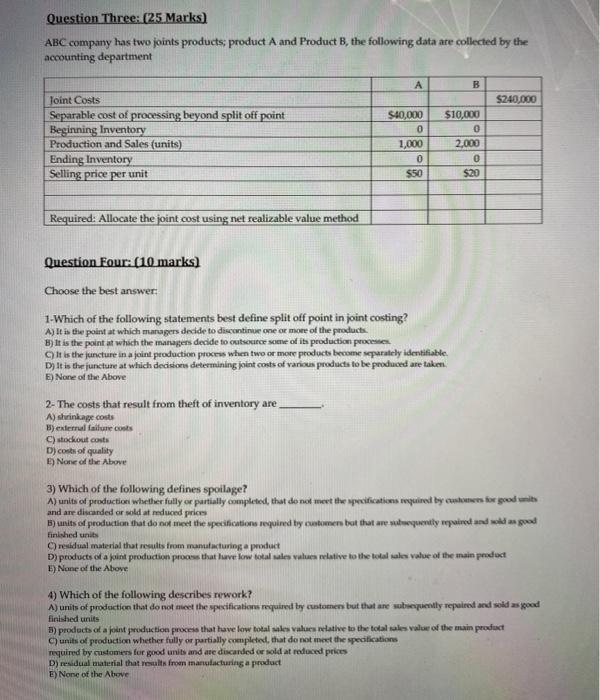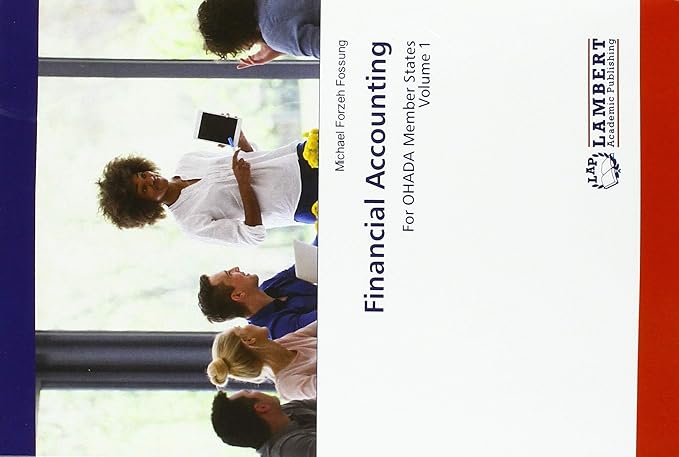Question Three: (25 Marks) ABC company has two joints products, product A and Product B, the following data are collected by the accounting department B $240,000 Joint Costs Separable cost of processing beyond split off point Beginning Inventory Production and Sales (units) Ending Inventory Selling price per unit $40,000 0 1,000 0 $50 $10,000 0 2,000 0 $20 Required: Allocate the joint cost using net realizable value method Question Four: (10 marks) Choose the best answer: 1-Which of the following statements best define split off point in joint costing? A) It is the point at which managers decide to discontinue one or more of the products B) It is the point at which the managers decide to outsource some of its production processes It is the juncture in a joint production process when two or more products become separately identifiable D) It is the juncture at which decision determining joint costs of various products to be produced are taken E) None of the Above 2- The costs that result from theft of inventory are A) shrinkage costs B) external failure costs C) stockout costs D) costs of quality E) None of the Above 3) Which of the following defines spoilage? A) units of production whether fully or partially completed, that do not meet the specifications required by customers for good and are discarded or sold at duced prices units of production that do not meet the specifications required by customen but that are submequently pained and well as good Finished units residual material that results from manufacturing product D) products of a point production process that love low total sales values relative to the total sales value of the main product E) None of the Above 4) Which of the following describes rework? A) units of production that do not meet the specifications required by customers but that are subsequently repaired and sold as pood finished units 3) products of a point production process that have low totalles values relative to the totale value of the main product units of production whether fully or partially completed, that do not meet the specifications required by customers for good units and are discarded or sold at reduced prices D) residual material that results from manufacturing a product E) None of the Above







